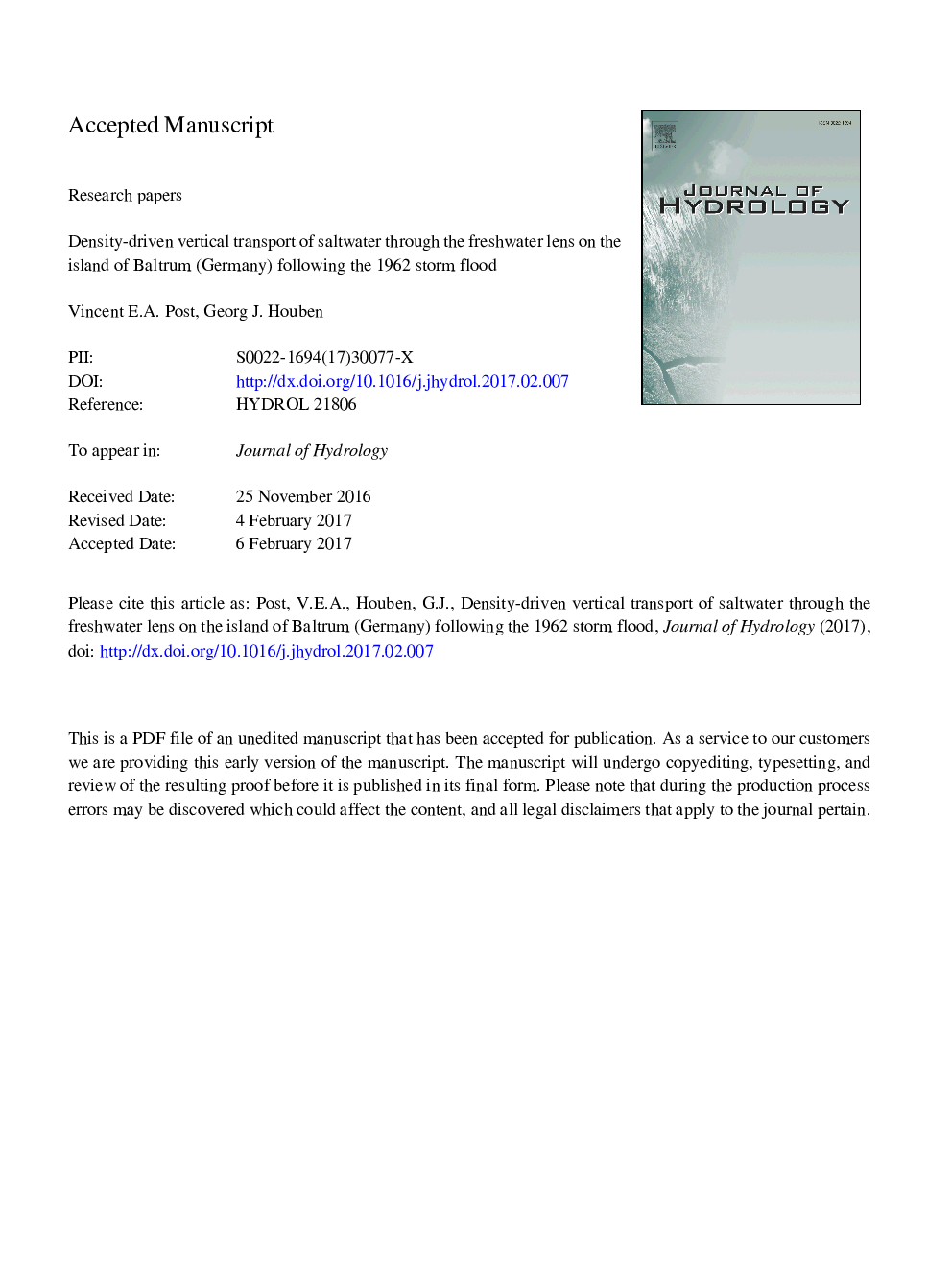| Article ID | Journal | Published Year | Pages | File Type |
|---|---|---|---|---|
| 5770870 | Journal of Hydrology | 2017 | 42 Pages |
Abstract
Due to the growing vulnerability of low-lying coastal zones to flooding by seawater, there is a current need for studies of the impact of such inundations on fresh groundwater resources. The knowledge from the literature is biased towards tropical atoll environments, and only few studies specifically investigated the effect of density-driven downward flow, even though its importance is widely acknowledged. The present study is based on previously unpublished hydrochemical data collected on the island of Baltrum following a devastating storm in 1962, which uniquely show the impact of seawater inundation on a freshwater lens in a siliciclastic aquifer. The field data show that about 3Â kg of Cl per m2 of inundated land area, or 18Â cm of seawater, infiltrated, and that elevated salinities persisted at the measurement depths of 4 and 6Â m for at least 4Â years, and at least for 6Â years at greater depths. Numerical models support the assertion that the shape of the measured salinographs, i.e. an initial sharp rise in the salt concentration with time, followed by a continually-slowing decrease, must be attributed to density-driven salt fingering. Models that did not consider density effects fail to simulate the observed patterns. Transient recharge, model dimension and lateral flow modify the details of the simulation results, but in all models density-driven vertical flow dominates the overall system behaviour. The diminishing importance of density-driven flow at greater depths, however, in combination with slow recharge-driven flow rates prolongs flushing times, and enhances the risk of brackish-water up-coning when pumping is resumed too soon.
Related Topics
Physical Sciences and Engineering
Earth and Planetary Sciences
Earth-Surface Processes
Authors
Vincent E.A. Post, Georg J. Houben,
